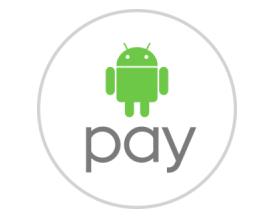
On 18th Sept 2017, Finance Minister Arun Jaitley launched Google’s payment app - ‘Tez’.
Tez by Google is perhaps the simplest form of monetary transactions.
Tez by Google and other ecosystems will make a major change in the digital payments landscape in India.
The tech giant claimed that Tez will enable money transfer directly from the bank accounts of customers, without them having to share their ‘personal information’.
The app will function on both Android and iOS platforms.
Google also said that the app will ‘understand’ eight Indian languages and will work with 55 banks
Tez (which means “Fast” in Hindi is Google’s play to replace cash transactions and become a more central part of how people pay for things, using their mobile to do so.
But it’s also a chance for the company to push out some new technologies - like audio QR (AQR), which lets users transfer money by letting their phones speak to each other with sounds - to see how it can make that process more frictionless, and therefore more attractive to use than cash itself.
Tez will see Google linking up with several major banks in the country by way of UPI (Unified Payments Interface) - a payment standard and system backed by the government in its push to bring more integrated banking services into a very fragmented market.
There will also be phones coming to the market from Lava, Micromax, Nokia and Panasonic with Tez preloaded, the company said.
Google has confirmed to me that payments made and taken using UPI are free for consumers and small merchants
To be clear, Tez is not a mobile “wallet” in the same way as PayTM offers a mobile wallet, where money is stored in the app and needs to be topped up to be used;
It’s more like Apple’s Wallet or other mobile wallets in the west: a place that links up your phone with your bank accounts to let you use your phone as a way to deduct payments from those accounts.
Supported banks include Axis, HDFC Bank, ICICI and State Bank of India and others that support UPI.
Online payment partners include large food chains like Dominos, transport services like RedBus, and Jet Airways
The app has support for English, Hindi, Bengali, Gujarati, Kannada, Marathi, Tamil, and Telugu.
For money transfers, there is a limit of ₹1,00,000 in one day across all UPI apps, and 20 transfers in one day.
AQR and Tez: Know More- Google says that AQR - the sound-based format for transferring money securely between devices - is its own proprietary technology.
- This appears to be the first time that Google has used it for payments, although it has used ultrasonic sound for transferring information between devices before
- For example, the tech has been used in Chromecast to connect devices since 2014. Other startups that have used audio-based “codes” to transfer payments and other data before include Lisnr, and Chirp.
- While AQR might seem like a neat technical twist, there are some practical reasons behind why Google might opt for this in Tez.
- For starters, it obviates the need for NFC in the device, and in the payment devices of merchants or whoever else a person is planning to transact with.
- The other thing is that it makes any kind of contactless transaction with the device fairly flexible and easy.
- Services like Airdrop on iPhones require Bluetooth and if you’ve used it before isn’t that seamless and foolproof to turn on (even though it works like a charm when it does). QR codes, meanwhile, require you to turn on the camera on your device and physically align it with a code on another screen, a potentially fiddly and difficult process.
- Using audio taps into some of the most basic features on even the most basic phones, a speaker and a microphone.
- Google has also trademarked the name in other Asian countries like Indonesia and the Philippines, so there seems to be a wider strategy to expand this to other regions.
- India, the second-most populated country in Asia after China, is a ripe market for mobile payment services, with a rapidly expanding middle class with more disposable income and a wider population that is very tech-focussed, with an estimated 300 million smartphones in use today.
- Digital payments are expected to reach a volume of $500 billion annually by 2020, according to a report from BCG and Google.